03-29-2020, 12:21 AM
Given that my business is shut down and I'm sequestered for a while, I decided to work on this. I bought it on the auction I talked about on a different thread. This is a 1939 or 1940 "Beam of Light" EH Scott Philharmonic in a Scott Wellington cabinet with phono. The Philharmonic is a 30 tube radio with audio expander and phono scratch suppressor. It has 2 RF stages and 4 IF stages. The bandwidth of the IF is variable from very selective (a bit less than 4kHz) to very wide (about 12 kHz). The RF bandwidth also widens at a certain point as the selectivity is widened out. Reception is from "long wave" (150 kHz) trough the "apex" band up to 60 mHz. Sensitivity is also variable. The output is PP via 4 6L6's, a 15" Scott (Magnavox) pedestal speaker and 2 PM tweeters. It cranks! Half of the caps had been replaced with Solar Brand, so it must have been some time ago. Most of them were OK. I restuffed all the rest of the original caps. The E caps were replace with strapped in caps of incorrect values. I restuffed the electrolytics with caps of closer original values and got rid of the strapped in caps. Most of the resistors were within tolerance, but I did replace a few. The candohm voltage divider had been replaced with a makeshift voltage divider. However, the values were all wrong and the HV, which is supposed to be at 250V was at 220V. Replacing those resistors with proper values brought that back into range. There are 4 "C" voltages that are fairly critical to proper operation so I had to tweak the negative supply voltage divider a bit to get things into spec. The volume control had been replaced with a non-tapped control. Mark Oppat was able to supply me with the proper value control. the tap really improved the bass response. Thank you Mark!
It was fun doing the alignment given the variable bandwidth IF. For proper sound it's fairly critical that the sides of the IF waveform be fairly symmetrical and fairly flat on the top. Using a spectrum analyzer gave a very graphical picture. Hitting a reasonable compromise between selectivity and symmetrical broadband was fun. I went through the process no less than 4 times experimenting with different settings. Gaining experience and knowledge of how each control in the 4 IF transformers affects the curve allowed me to settle in on what I think, is a great result. Complicating matters is the fact that Scott used both an RF and an IF AGC. IF AGC voltage had a tendency to vary the response curve of the IF so I determined the most common IF AGC voltage and nailed the IF AGC to that setting. Then I was able to set the IF transformers to the best curve. The spectrum analyzer was invaluable in this. Final results are awesome. Highly selective and sensitive, yet wide bandwidth (though not as sensitive as high selectivity) provides HiFi audio as good as my Scott 16A FM, if not better.
Finally, after re-gluing many loose joints, I installed the radio in its previously refinished cabinet. That, of course, increased the bass response tremendously. I've been listening to it now for about 3 hours playing all kind of music via my HiFi "transmitter" with signal coming from my computer. It is the best sounding radio I have, without a doubt. Better than my Masterpiece VI. The radio is incredibly sensitive, as one would expect with 2 RF stages. I think I'm going to be happy with this radio. If the AM/FM Philly I bought from Ron comes up to this standard, I will be very pleased as FM would be great! The Garrard turntable is the next project.
A couple of pics:
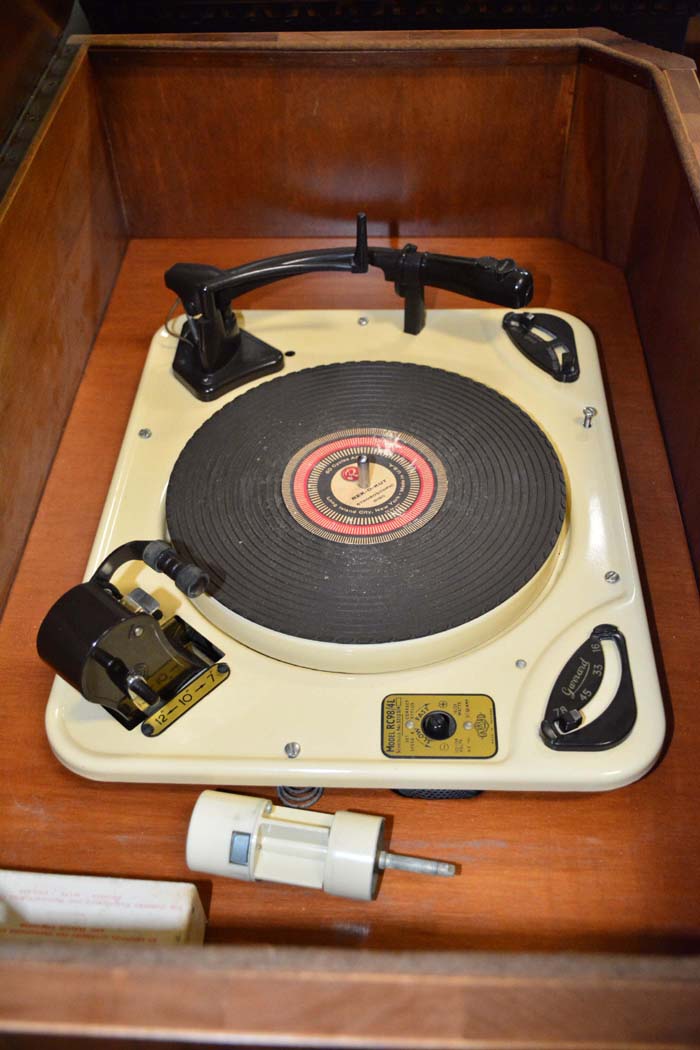
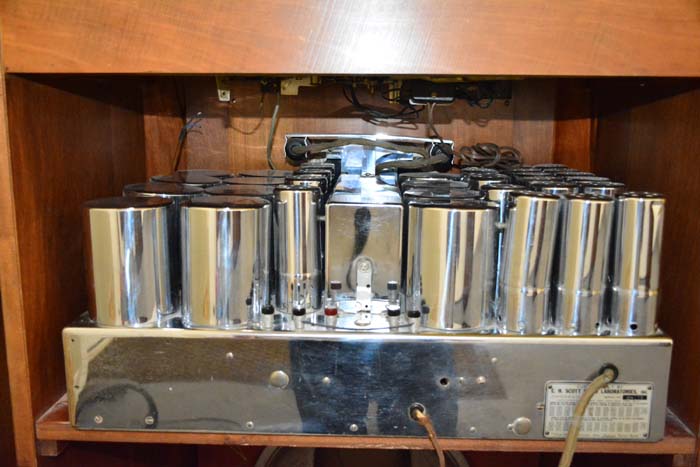
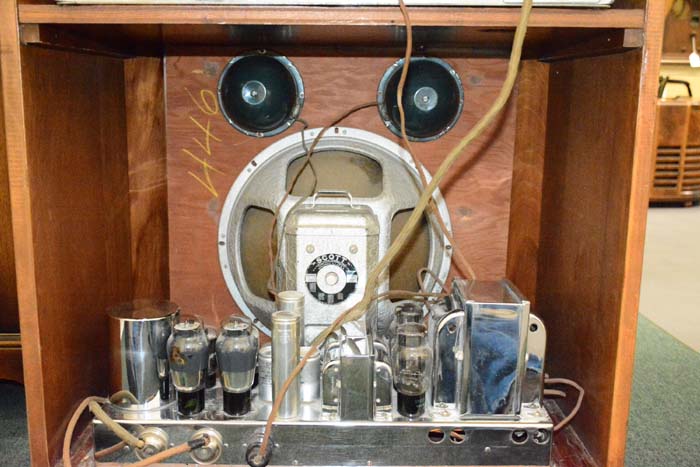
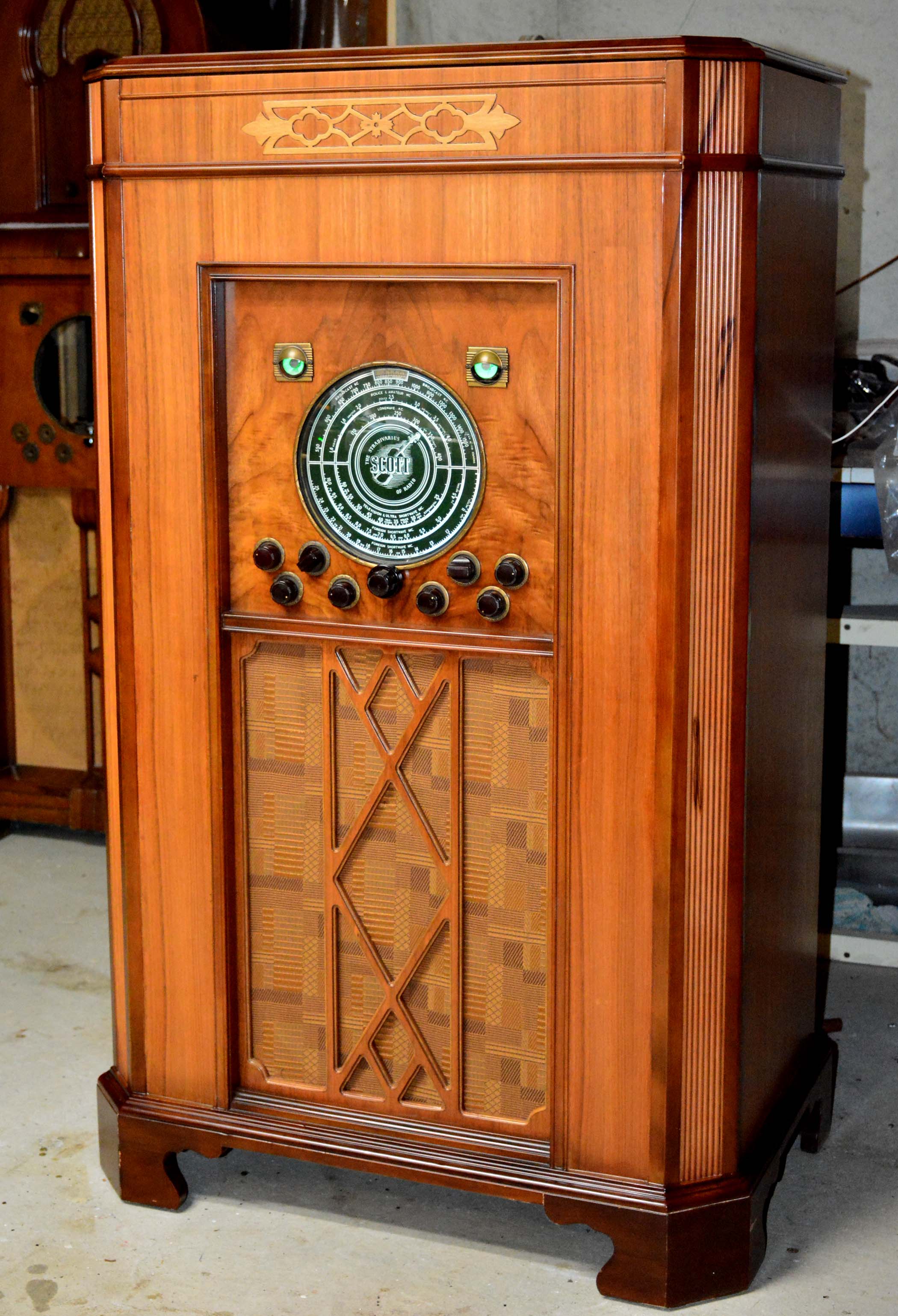
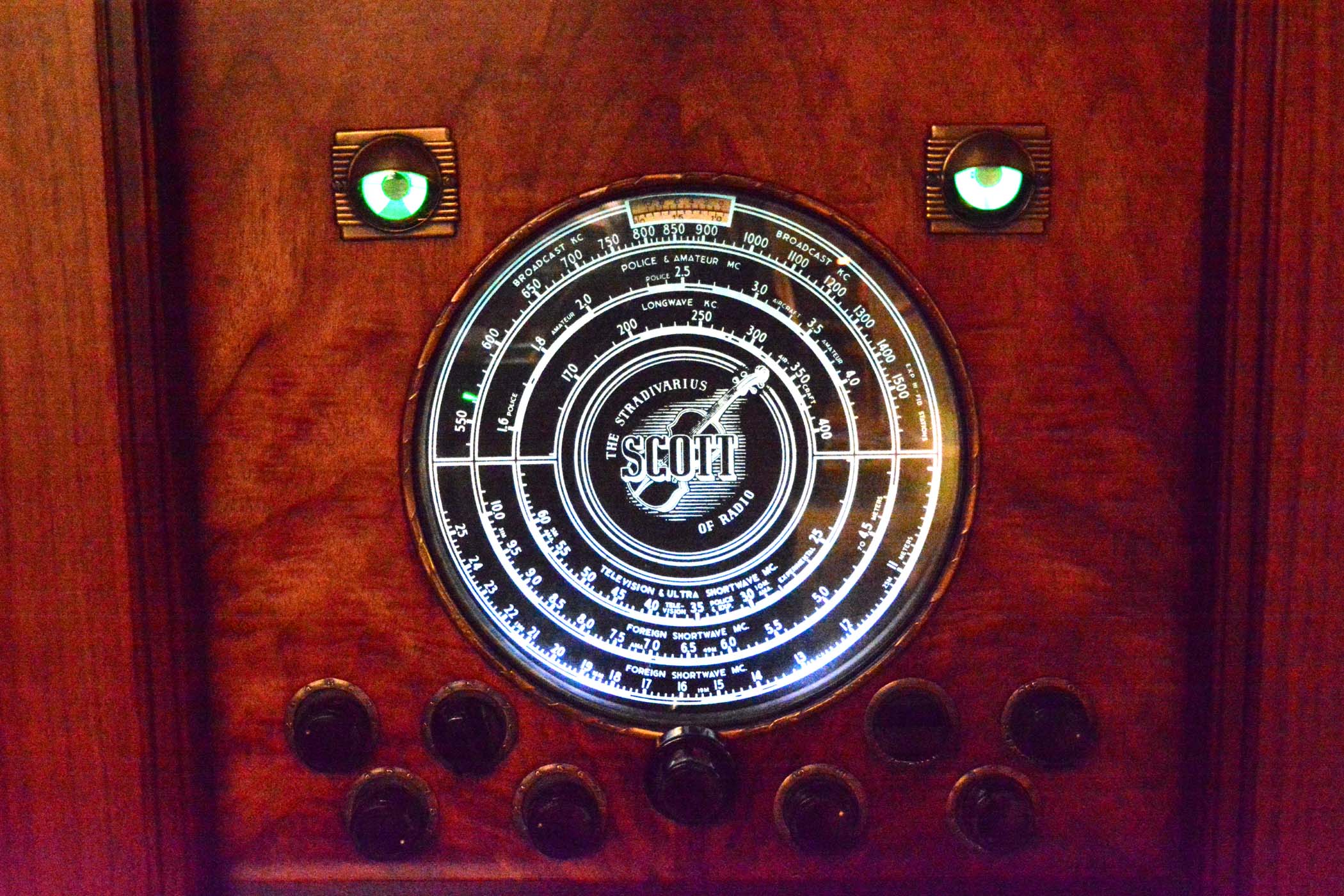
It was fun doing the alignment given the variable bandwidth IF. For proper sound it's fairly critical that the sides of the IF waveform be fairly symmetrical and fairly flat on the top. Using a spectrum analyzer gave a very graphical picture. Hitting a reasonable compromise between selectivity and symmetrical broadband was fun. I went through the process no less than 4 times experimenting with different settings. Gaining experience and knowledge of how each control in the 4 IF transformers affects the curve allowed me to settle in on what I think, is a great result. Complicating matters is the fact that Scott used both an RF and an IF AGC. IF AGC voltage had a tendency to vary the response curve of the IF so I determined the most common IF AGC voltage and nailed the IF AGC to that setting. Then I was able to set the IF transformers to the best curve. The spectrum analyzer was invaluable in this. Final results are awesome. Highly selective and sensitive, yet wide bandwidth (though not as sensitive as high selectivity) provides HiFi audio as good as my Scott 16A FM, if not better.
Finally, after re-gluing many loose joints, I installed the radio in its previously refinished cabinet. That, of course, increased the bass response tremendously. I've been listening to it now for about 3 hours playing all kind of music via my HiFi "transmitter" with signal coming from my computer. It is the best sounding radio I have, without a doubt. Better than my Masterpiece VI. The radio is incredibly sensitive, as one would expect with 2 RF stages. I think I'm going to be happy with this radio. If the AM/FM Philly I bought from Ron comes up to this standard, I will be very pleased as FM would be great! The Garrard turntable is the next project.
A couple of pics:



![[-] [-]](https://philcoradio.com/phorum/images/bootbb/collapse.png)


